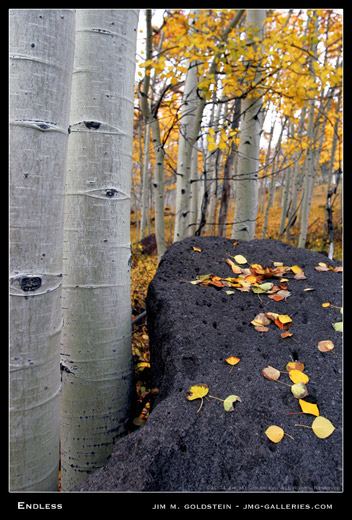This evening I was very fortunate in that I caught “The Greatest Good” on PBS. It reminded me of my roots and the progression of my interest into photography. With out any doubt my interest in photography is rooted in my fondness for nature and wilderness. Growing up as a small child in Alaska, the wilderness was an endless curiosity on our numerous camping trips and later throughout the rest of my life exploring the backcountry of California extended that fascination and appreciation. The foundation of my interests would not be possible with out the creation of public land policy, U.S. National Forests, the National Park Service and modern Wilderness Conservation.
“The Greatest Good” very effectively, if not poetically, covers the history and evolution of U.S. land management and conservation.

Photo: Dixie National Forest, Utah
Up until this point John Muir and Teddy Roosevelt were the icons I recognized in regard to the creation and conservation of our land, but I learned something new tonight about the incredible impact of Gifford Pinchot and the School of Forestry his family created at Yale University. There is too much to note in this short blog post so I highly recommend looking out for this show or renting the DVD.
To quickly encapsulate the program the following information was covered:
- – The “timber famine” which spurred the Pinchot family to leverage their timber fortune to conserve and manage forests
- – Adoption, by U.S. conservationists and later policy makers, of the philosophy of “sustained yield”
- – The Forest Reserve Act of 1891 which gave the President power to reserve land for the public good
- – The Organic Act of 1897 which created the National Forest System
Protecting forests, water flows and securing a continuous supply of timber for the population of the U.S. - – The Transfer Act of 1905 which moved administration of the US National Forest reserves to the Department of Agriculture
- – The conservation conflict between preservation, grazing and timber
- – Teddy Roosevelt’s amazing work to secure 100 million acres of forest
- – Muir vs. Pinchot and Hetch Hetchy water resevoir for San Francisco
- – “The Big Blow Up” of Aug, 20 1910 and the advent of the U.S. Forest Service providing a greater good of fire prevention
- – The 1911 Weeks Act preserving eastern forests
- – The creation of the National Park Service in 1916
- – Aldo Leopold’s involvement in creating a modern Wilderness Area system starting with the Gila Wilderness Area
- – The transformation of protected public lands with Franklin Roosevelt’s creation of the Conservation Core
- – The advent of the philosophy of land restoration
- – The expansion of wilderness areas in Alaska and else where to modern levels
This may look like a history lecture outline, but for those that visit national parks or wilderness areas you’ll gain a greater respect for these areas in knowing how hard it was to create them. Unfortunately it’s all too easy for modern politicians to role back these protections. Hopefully with greater understanding of the history more people will be inclined to fight the constant attempt to compromise the protection and up keep of our public lands… our national treasures.[tags]The Greatest Good, PBS, public land policy, U.S. National Forest, National Park Service, Wilderness Conservation, nature, wildlife, wilderness area, park, John Muir, Teddy Roosevelt, Franklin D. Roosevelt, Smoke Jumpers, Conservation Core, Gifford Pinchot, The Big Blow Up, Forest Service, Hetch Hetchy[/tags]
